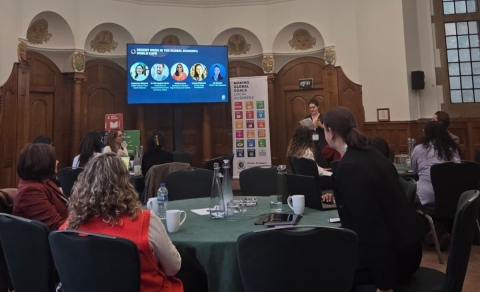UN calls for comprehensive debt standstill in all developing countries
15 OCTOBER, 2020
Washington — Poor and middle-income countries need bold new mechanisms to dig out of crushing debt, sharply worsened by the COVID-19 pandemic, with a focus on “green,” sustainable recovery, a senior UN official told G-20 finance ministers and central bank governors at the World Bank-International Monetary Fund (IMF) Annual Meetings yesterday.
Navid Hanif, Director of Financing for Sustainable Development at the UN Department of Economic and Social Affairs, welcomed G-20 plans to extend through 2021 the Debt Service Suspension Initiative (DSSI)—announced in April in response to the pandemic—but said more needs to be done to address the worst global crisis since World War II.
“Countries are trapped in a vicious cycle of pre-existing high debt and low growth, while facing a perfect storm of falling revenues and rising expenditures. Bolder, more comprehensive and more forward-looking measures and instruments must be deployed to avoid a protracted fiscal paralysis,” Hanif said.
“From the development side, 135 countries are implementing socio-economic response plans and 117 socio-economic impact assessments within the UN development system—all of which are spelling out the shape of things to come. By now it has become quite clear that the worst is yet to come.”
COVID-19 and government-ordered measures to contain it have caused dire economic and social consequences globally, harming vulnerable people and poor countries most and plunging the world into recession. Economies are expected to shrink in 172 countries in 2020, extreme poverty is set to increase by 88 million to 115 million people, and 435 million people are likely to lose jobs this year alone.
“At the United Nations, we believe that many developing countries will not be able to grow or borrow their way out of debt distress. Recovery must be linked to the DNA of a green and inclusive recovery,” Hanif said. “Debt relief must be expanded to all developing and middle-income countries that request it. We need an across-the-board debt standstill for countries unable to service their debt, and a comprehensive approach to structural issues in the international debt architecture to prevent defaults.”
UNDP Administrator Achim Steiner has consistently called the COVID-19 debt crisis an “enormous and growing challenge”, urging an immediate debt moratorium, targeted relief for countries with unsustainable debt levels, and a review of long-standing challenges of the international debt architecture. “Collecting debts to the point of bankrupting economies in the midst of the Covid-19 economic meltdown is ultimately self defeating”.
The United Nations is advocating an ordered multilateral debt settlement mechanism, with debt restructuring linked to green debt swaps and buyouts to help countries preserve biodiversity, move away from fossil fuels, and curb global warming. Such mechanisms would allow creditors to absorb losses so long as countries invested saved resources in preserving the planet and transitioning to renewable energy.
The UN development system, in collaboration with the World Bank, IMF, and other national and international partners, is working to address health-related, socio-economic, and other impacts of the ongoing pandemic, guided by more than 100 socio-economic response plans. UNDP serves as UN technical lead in assessing and responding to COVID-19.
As of September 2020, the United Nations had distributed medical supplies to 172 countries, including 450 million items of personal protective equipment (PPE); trained more than 2.1 million health workers; provided mental health support for 45 million children, parents, and caregivers; and reached more than 2.6 billion people with public health and safety messages; helped essential health services and immunization campaigns including for 148 million at-risk children; and provided social and economic relief to millions of affected people around the world.











